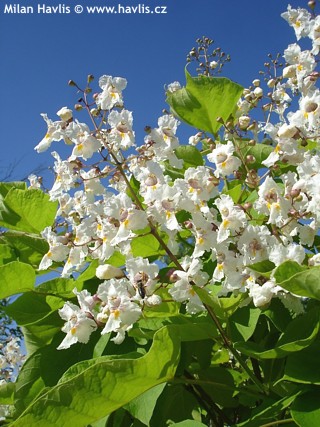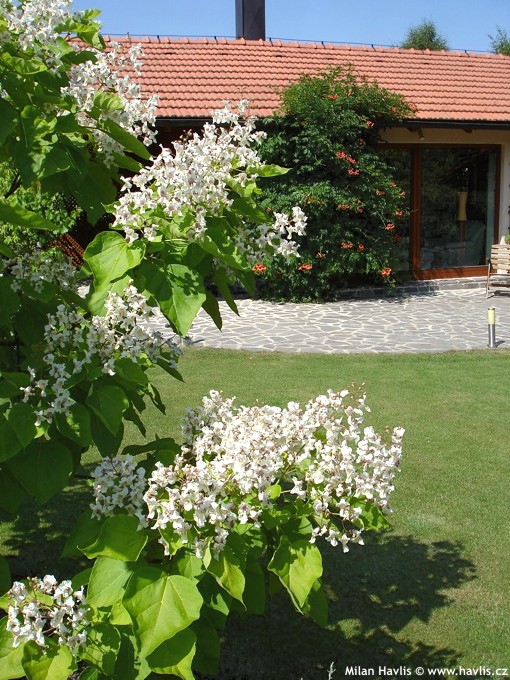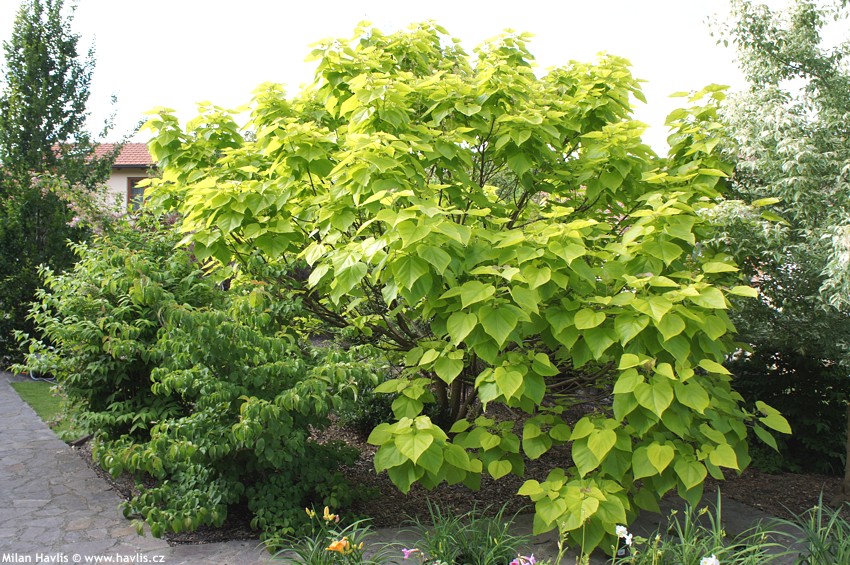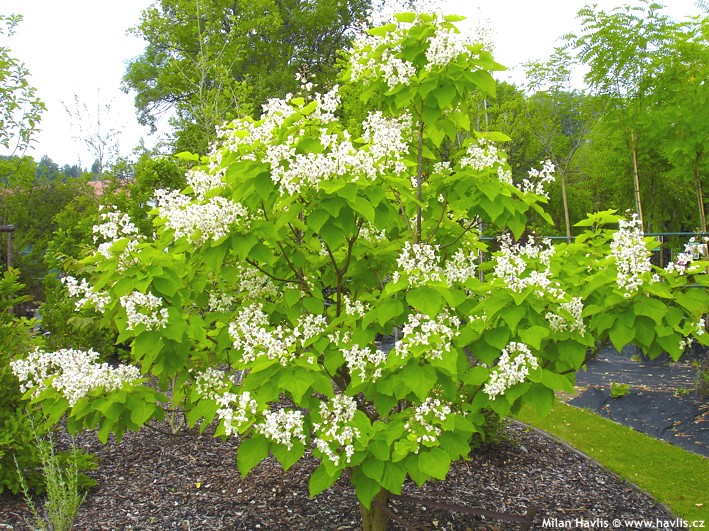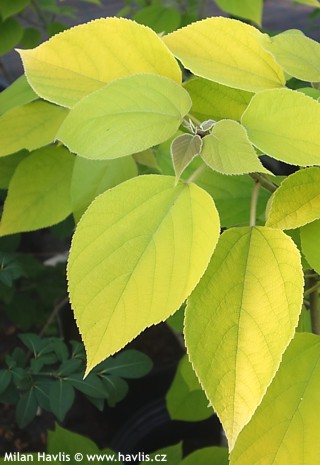Catalpa bignonioides 'AUREA' Indian bean tree, southern catalpa


Catalpa
Every garden, even the small one, deserves a specimen tree: in the centre of the lawn, in the corner, or in front of the entrance. This southern catalpa offers quite a few attractive features: leaf size, leaf colour, flowers, and the habit itself.Beginning of summer 20-30 cm tall upright panicles are formed with many bell-shaped, white flowers with purple and yellow marking. Seeds ripen in long brown pods that hang on the tree all winter until early spring.
Just one thing has to be observed: summer mildew. When the weather is warm and wet, usually beginning of summer, the leaves may be affected by mildew infection which is manifested by small grayish white spots that quickly spread throughout the entire leaf. Once you see the spots treat the leaves with a fungicide (with copper content). Otherwise the leaves will remain covered with the mildew film until the autumn.
It grows medium fast or fast. Shrub forms look best as they form its natural wide umbrella shape from the ground. Tree forms make umbrella crowns, too, and tend to make layers of branches with age. Naturally it grows to some 8m but it is usually kept much smaller by pruning from mid-spring until early summer. Pruned catalpas have denser and more compact crowns.
Catalpas are not too picky about pH or soil type. However, they will respond well to good, well-drained soil. Our catalpas performed exceptionally well even on clay and withstood temporary water-logging. They do not suffer from air-pollution and adverse conditions. Fully hardy to approx. -28°C (USDA zone 5).
Last update 05-12-2008.
Goods are shipped all over Europe. For Russia and U.K. and for further details please read about SHIPPING OPTIONS HERE.
Are you interested in a serious discount for orders NOV-FEB? Check your options here.
THE PRICES INCLUDE VAT of 15%. For quick conversion you can use 1 CZK = approx. 0.04 EUR
- STANDARD QUALITY - Plants of this group are 1st class quality with number of branches and overall density adequate to their size and age, considering they were container grown.
- DE LUXE QUALITY - This label guarantees a luxurious quality of manually selected plants that, compared to their height and age, are exceptionally dense and beautiful.
- EXTRA - These plants are usually mature and bigger specimens with exceptional overall appearance.
- STANDARD (as described in the plant form) means a tree with a trunk of 190-210 cm and a crown at the top, unless specified differently. The commercial size for trees is their girth measured in the height of 1m from ground.
- HOBBY - These plants are of the same quality as our standard-quality plants but younger and therefore cheaper.
- SHRUB - a woody plant with branches growing bushy from the ground level.
- HALF-STANDARD or MINI-STANDARD - a small tree with shorter trunk, its size is usually specified.
- FEATHERED - These are trees with branches growing already from the base of the trunk and up along the stem.
- GRASSES and PERENNIALS - Sizes given usually read the diameter of the pot or the clump, as specified.












